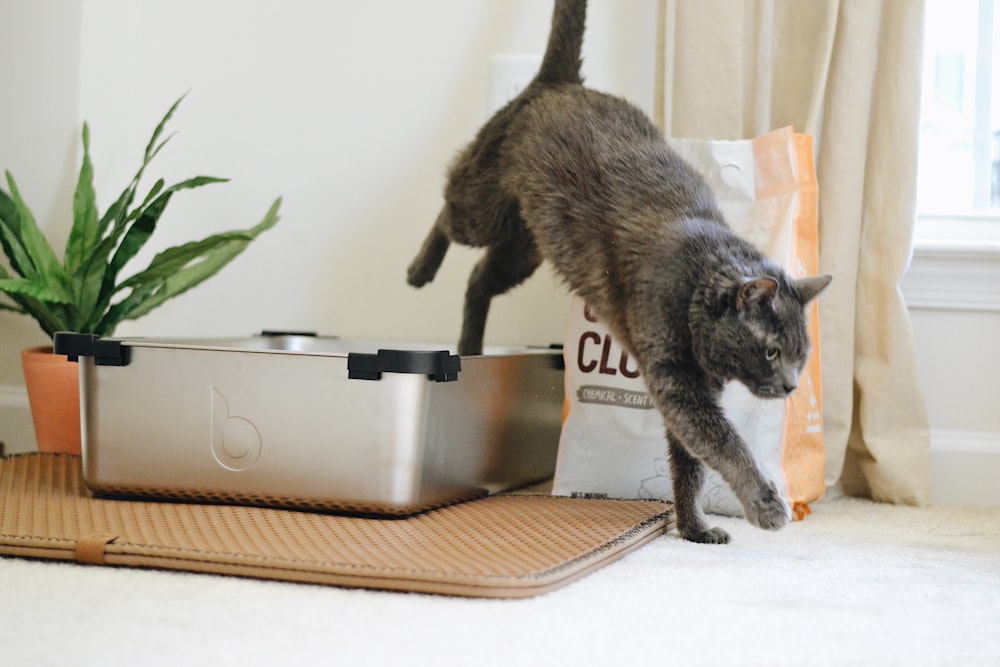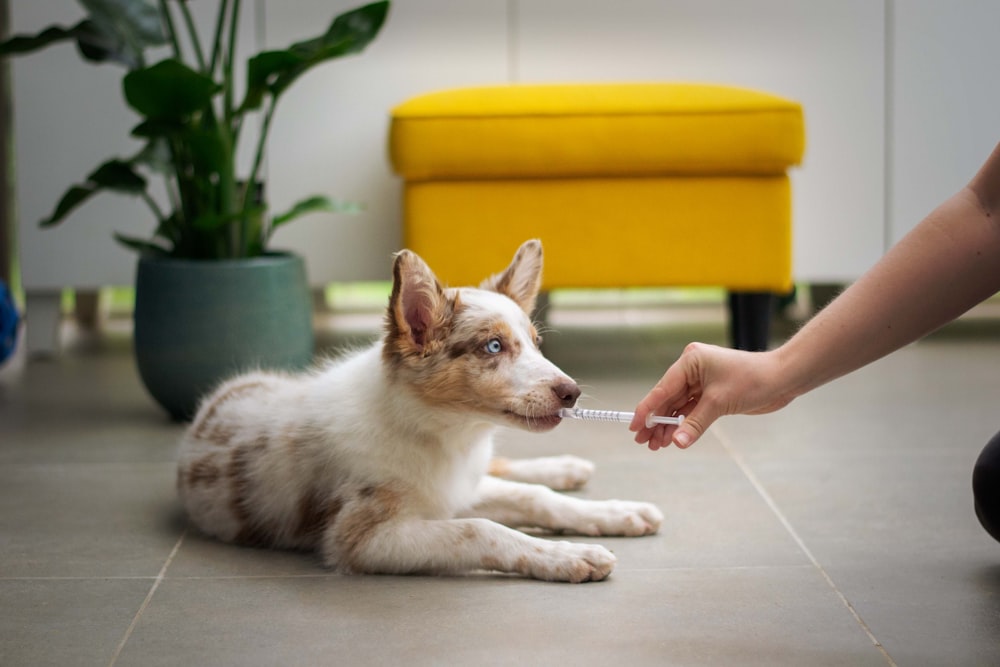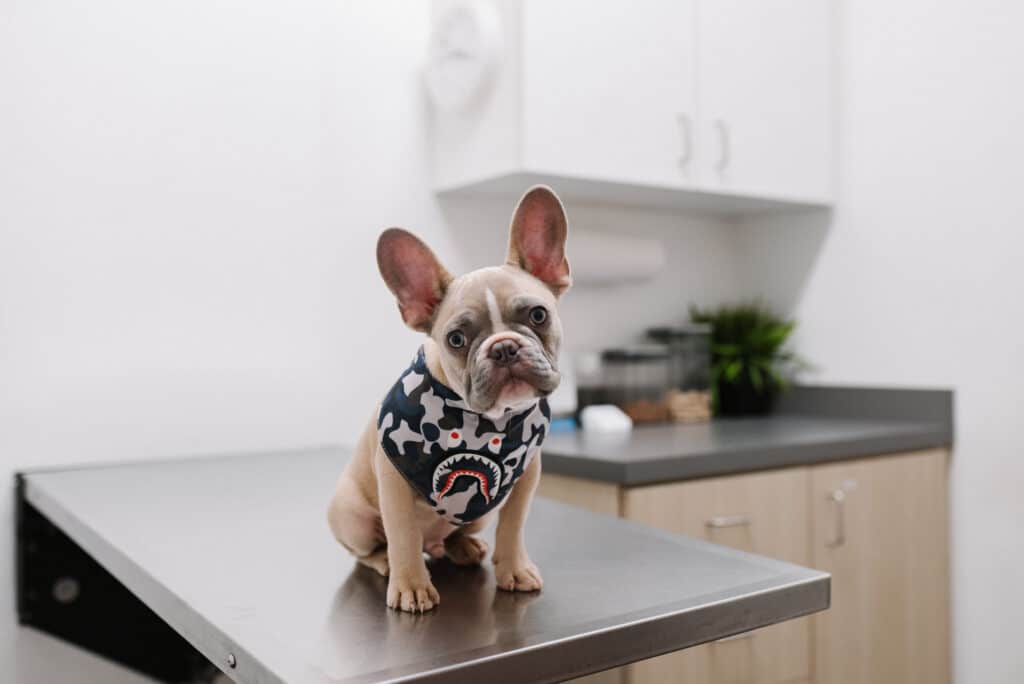70% of American households have pets. Our furry friends are like our family. Yet, often we neglect to include them in our natural disaster or emergency planning—we just don’t think about it.
That can be very dangerous. Not having a plan for your cats, dogs, and other pets could mean that you and your family members are put in a high-risk situation when the worst happens.
We’ve compiled tips and tricks to best prepare your pets for emergency situations.
Prepare Your Pet’s Emergency Kit
Your pet’s emergency kit should include at least two weeks of supplies for your pet. You might need to go to a shelter—or you might need to stay with family or friends. The more you pack, the more prepared you’ll be.
1. Leashes, Harnesses, Carriers, and Transport Cases

You don’t want to be fumbling around for control of your pet during an emergency. Make sure you know exactly where your carriers, transport cases, leashes, and harnesses are. It’s usually better to have multiple carriers than to try to keep all animals in the same one. And get extra leashes and keep them in your bag because you might not be able to find the ones that you usually use fast.
2. Food Rations (and Bowls) for At Least Two Weeks

Pack a few bags of food in your pet’s emergency bag. You can purchase folding bowls that are easy to pack. You should pack both food and water bowls and remember to have enough water for your family and your pets. This is especially important if your pets use prescription foods. If your pets use prescription foods, you need to put at least a week of food in with your stuff.
3. Waste Receptacles: Poop Bags and Kitty Litter

You never know where you’ll be. It’s possible that you’ll be bunking with friends and family and will need waste receptacles. It’s also possible you might need to be in a car for a while. Either way, you’ll need waste receptacles. This isn’t as important as some of the other items on your list, so consider placing them in a secondary bag depending on how urgent the emergency is.
4. Extra Medications for Your Pet

Your pet will need at least two weeks to a month of extra medications. If you’re packing for a trip or an emergency, let your vet know. They may be able to provide extras. Make sure your pet’s tag or collar also notes what medications they’re on. And if you can’t get extra medications for your pets, make a list of vets nearby so that you can connect with them in the event that there is an emergency.
5. Copies of Your Pet’s Medical Records

Let’s say you need to drop your pet off at a shelter temporarily. You’ll need copies of your pet’s medical records, which also include their up-to-date vaccine information. Get rabies tags and place them on your pet’s collar. Additionally, consider getting your pet vaccinated for things like kennel cough even if your animals aren’t around other animals; in an emergency, they might be.
6. Current, Printed Photos of Your Pet

What happens if your pet bolts during a bad storm? You want to find them as soon as possible. Make sure you have current, printed photos of your pet with any identifying marks visible. There are even some places that identify pets via recognition. You can upload a picture of your pet and you’ll be able to get notified of any similar pets in the area.
7. Your Pet’s Bed, Toys, and Blankets

To make your pet more comfortable during an incident, pack their bed, toys, and blankets. This will go a long way toward making them feel at home even if everything is otherwise chaotic. A favorite toy goes a long way. You can start packing away their old things in your emergency bag so you aren’t taking away their current objects.
8. A Written Copy of Feeding Schedules and Behavioral Issues

Let’s say you need to leave your pet with a friend or family member. A detailed care schedule and notes can help them take care of your pet, even if you don’t have a lot of time to explain things. Pets can get sick if they’re not kept on their feeding schedules. Don’t just put this in an online document; print it out. You might not be able to print things in an emergency.
9. Regular Vet and Emergency Vet Contact Information

You should have both an ideal regular vet and an emergency vet with your pet’s contact information. If your pet gets injured, friends, family members, or even boarding shelters will need to know who to contact. Make sure emergency contacts also know that they’re your emergency contacts so they can expect to be connected with.
10. A List of Other Emergency Contact Numbers

What happens if you aren’t available? Make a list including friends, family, shelters, and boarding centers that might be able to take your pet in an emergency. Also, make a list of shelters that take pets; you don’t want to be frantically calling around. Not every shelter takes pets; in fact a lot of them don’t.
11. A Pet First-Aid Kit

And learn how to do things like pet CPR. A pet first-aid kit will have everything you need to provide first-aid to your pet if there’s an incident. Of course, you will want to get your pet to a vet as soon as possible, but this can help. Don’t just use a human kit. Benadryl can be used on pets but aspirin cannot.
12. Pet Life Jacket

If you think flooding could be a potential problem, you should also pack a pet life jacket. Also, get your pet used to the pet life jacket beforehand; you don’t want their first time in the jacket to be during an emergency. Always make sure that your pet’s clothing fits properly because otherwise it can become a hazard.
13. Paw Protectors and/or Jackets and Warm Clothes

If you’re in an area that gets cold, think about warm clothes for your pet. If you’re going to be leaving at night or during bad weather, you’ll want to protect them from the weather.
14. Your Pet’s Microchip Information
Microchip information is critical, but there are a lot of databases out there. Find out who your animal is registered with. If your pet doesn’t have a microchip, get them one; it’s very important. Print out the microchip information in case you need to find it later and put a tag on their collar saying they’re microchipped.
Preparing for an Emergency
In addition to the above checklist, run evacuation drills with your pet so your pet is familiar with the plan. Look into what shelters are available in your area that will take pets, too. If you have multiple pets, make plans to house them separately if necessary. Consider which emergencies are most likely—fire? Flood? Tornado?
Thinking about what happens to your pet ahead of time will save you and your family a lot of heartache and stress if an emergency does occur. The more prepared you are, the more prepared they will be, too.
Did you like this article? Is there anything else you can think of that would need to be in your pet’s emergency preparedness bag? If so, leave a note in the comments!
FAQs
How do I prepare my pet for an emergency?
Run drills with your pet. This will reduce the chances that they will struggle or get over-excited if you need to evacuate quickly. Practice getting everyone in your family, including your pet, in the car fast.
What should I put in my dog’s emergency bag?
Your dog’s emergency bag should include food, medication, toys, blankets, and basic information about health. Think about what your dog would require over two weeks.
What should be in a cat emergency bag?
Like a dog, your cat’s emergency bag should include food, medication, toys, blankets, and basic information about health. In addition, cats should usually have a full setup (such as food and water bowls) in a cat carrier, because they will need to be in a carrier in many situations.
What to do with pets in a natural disaster?
First, find out what you’re advised to do. If you’re supposed to shelter in place, take your pets and their emergency bag to the safest place in your home, whether it’s a basement or a storm shelter. If you’re supposed to head to an external shelter, go to the closest shelter that allows pets.


